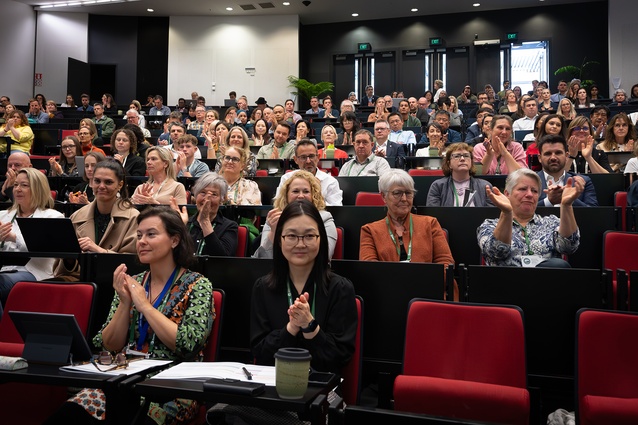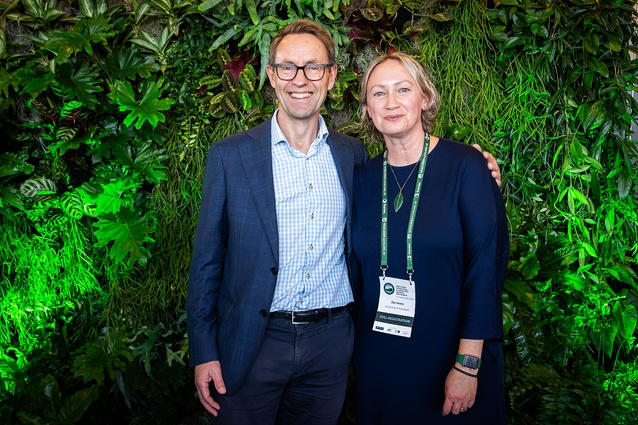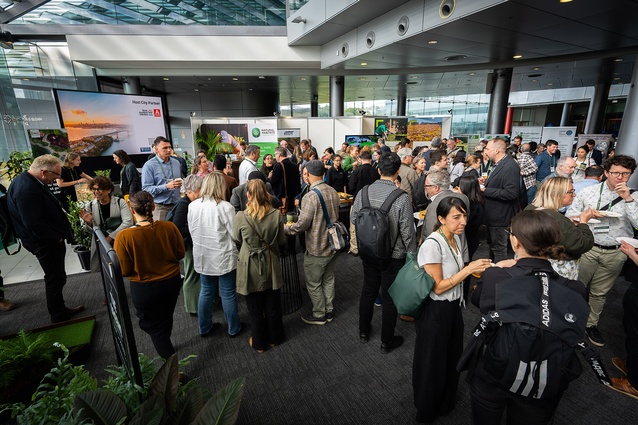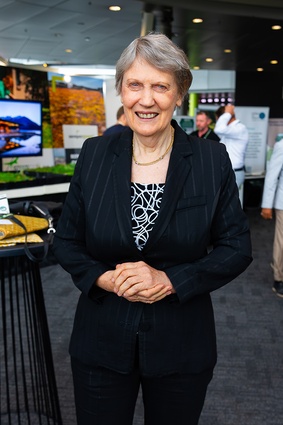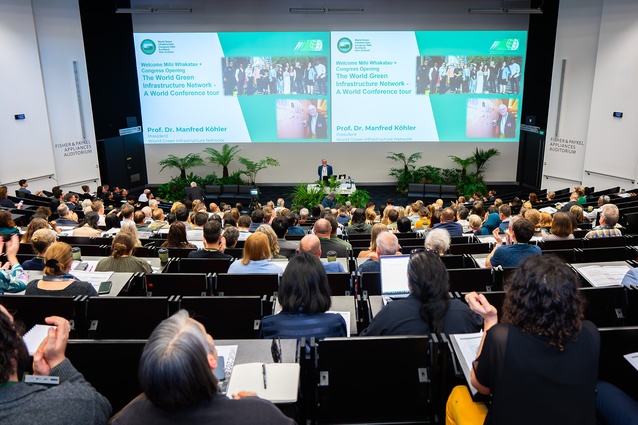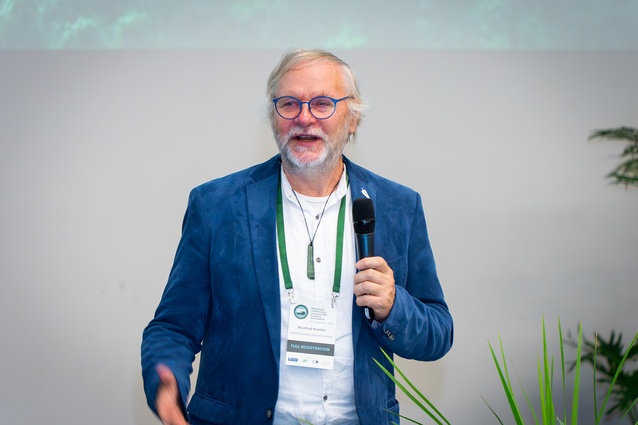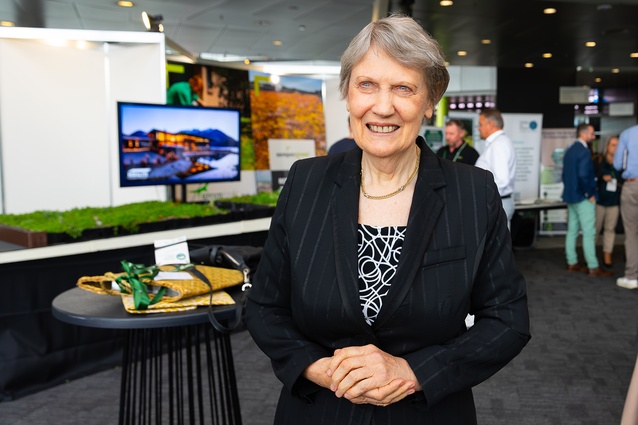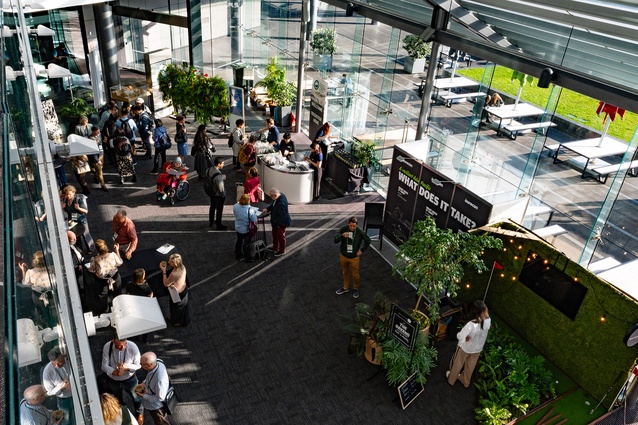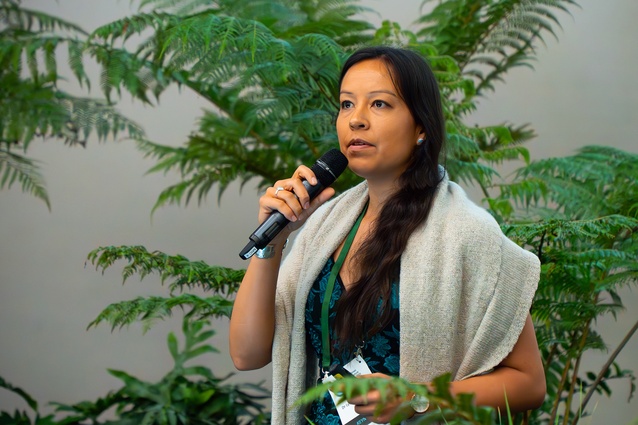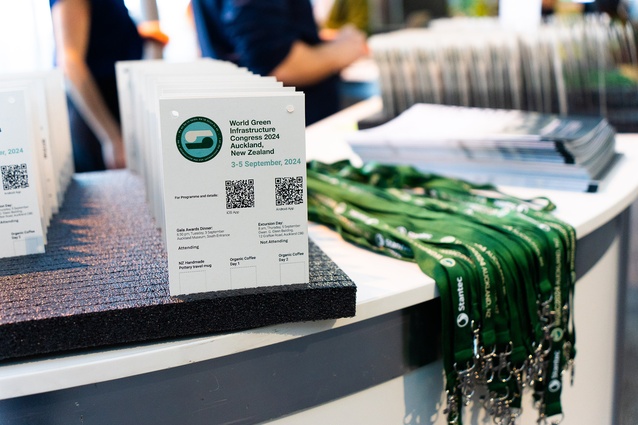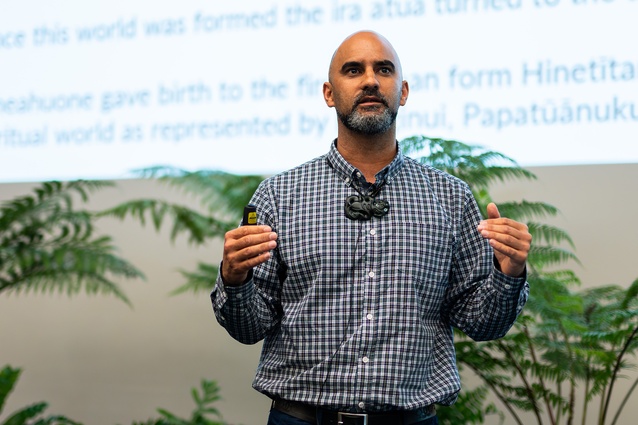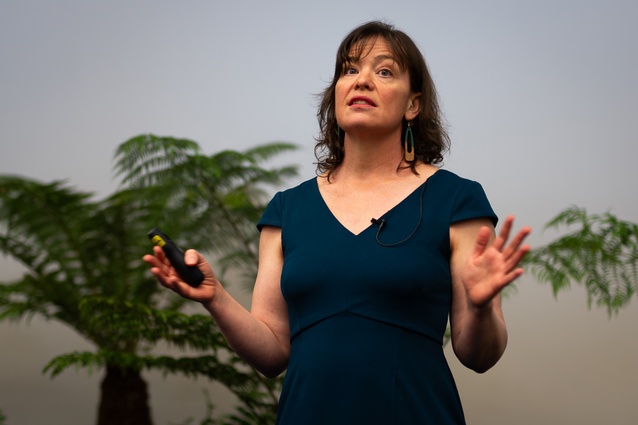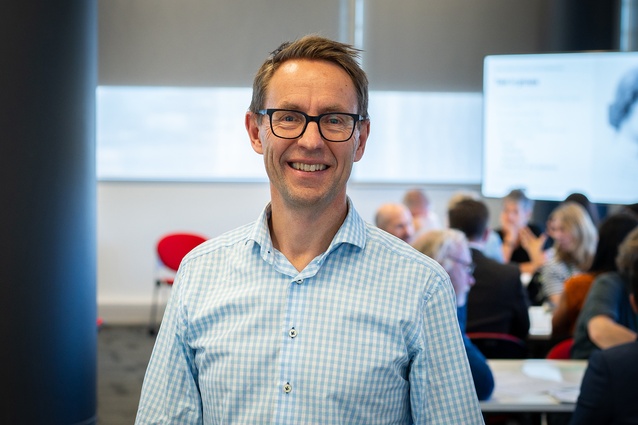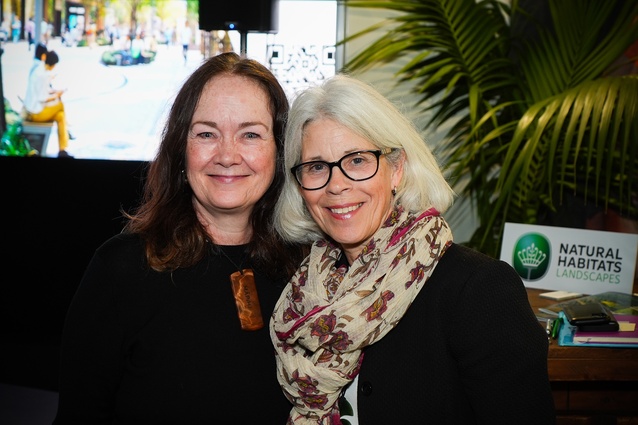Building Change: World Green Infrastructure Congress 2024
The 2024 WGIC held in Tāmaki Makaurau Auckland September 3–4, provided a unique opportunity to share and advance solutions on inclusive green infrastructure, sustainability, and urban resilience. Leading sustainability strategist Rebecca Mills provides key takeaways from the global event.
Overarching themes
Sharing knowledge toward creating sustainable, livable cities, key themes of the WGIC2024 included:
- Regeneration and biodiversity: Strategies for enhancing urban biodiversity through nature-based solutions, green roofs, vertical greenery and green infrastructure. Speakers emphasised the importance of integrating green spaces within urban planning to promote ecological health and resilience.
- Technology and innovation: Technological advancements in green infrastructure, such as AI for monitoring urban forests, digital tools for urban heat island mitigation, and new methods for sustainable water treatment.
- Climate resilience: Explored approaches to making cities more resilient to climate change, including flood mitigation, sustainable urban design, and leveraging green infrastructure for climate adaptation.
- Community engagement and equity: Highlighted the role of community in fostering sustainable urban environments, emphasizing equitable access to green spaces and the socio-economic impacts of urban greening initiatives.
- Health and wellbeing: Connected green infrastructure to public health outcomes, illustrating how nature-based solutions could enhance mental and physical health for urban residents.
The Awards Dinner at The Dome, Auckland Museum, Pukekawa, was made even more special by the warm manaakitanga (hospitality) provided by Ngāti Whātua Ōrākei. The evening provided an opportunity to strengthen whanaungatanga (relationships) between Ngāti Whātua Ōrākei, global green infrastructure leaders and all in attendance.
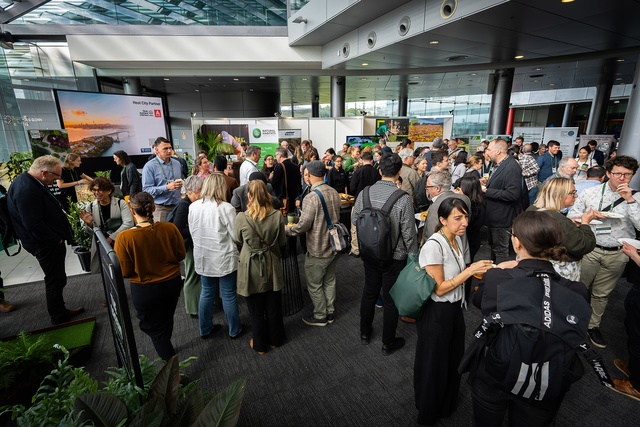
Project spotlights and insights
Nature-inclusive cities
Nature-inclusive solutions include approaches to designing and planning human infrastructure, buildings, and landscapes in ways that integrate and accommodate nature, creating habitats for wildlife and promoting biodiversity while serving human needs.
Wenchian Shi gave an overview of the MVRDV: Green Infrastructure and Nature-Based Solutions Projects. MVRDV is a Dutch architecture firm known for its research-based design methodology and future-forward ethos that embraces new technologies and acknowledges the changing world we live in. The presentations’ focus was on the creation of livable spaces that support biodiversity and enhance the quality of life through:
- Innovative green roofs and façades: Designing buildings with green roofs and façades that reduce energy consumption, improve insulation, and create habitats for local wildlife.
- Urban farms and gardens: Incorporating spaces for food production in urban settings, contributing to food security, community engagement, and environmental education.
- Climate adaptation strategies: Utilising natural elements to manage rainwater, reduce flooding risks, and mitigate the urban heat island effect, making cities more resilient to climate change.
- Community and public spaces: Designing accessible green spaces that foster social interaction, promote health and well-being, and provide recreational opportunities.
Case studies:
Op het dak, Rotterdam. A bistro pop-up by Studio Ossidiana (2016)
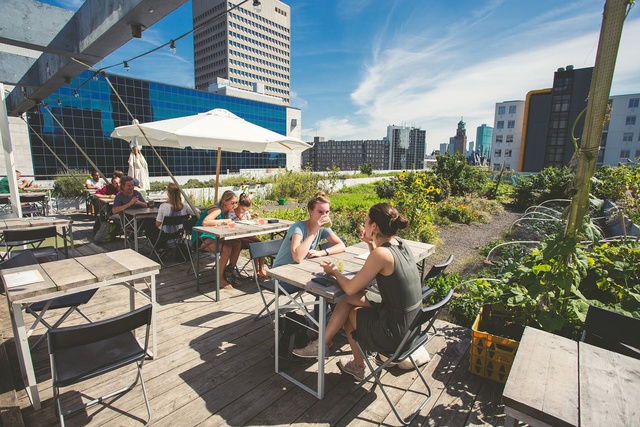
Meaning ‘On The Roof’ in Dutch, Op Het Dak was initially opened as a pop-up restaurant on the roof of a formerly abandoned building now known as the Schieblock. Located beside a large and intensive rooftop garden, the bistro draws people up to what was once a derelict urban space.
RoofScape by MVRDV NEXT (2022)
This initiative by MVRDV’s tech taskforce MVRDV NEXT provides a visualising for Rotterdam’s rooftops and suggestions that simulate the interplay of rooftop program (green, water retention, residential, and social spaces) according to an impact matrix.
So much more is possible on our rooftops than we all think now…
‘De Trap’ Rotterdam. An installation by MVRDV (2016)
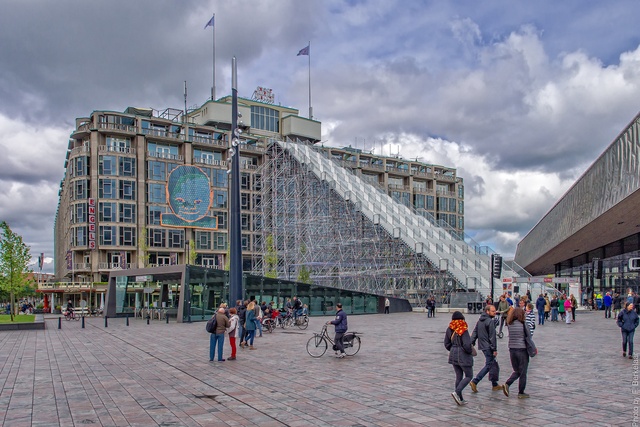
This giant staircase installed in front of the Groot Handelsgebouw (GHG) on the stationsplein (station plaza) of the Rotterdam Centraal Station gives the public access via a dramatic 180-stair climb to GHG office’s rooftop terrace. The project activates the stationsplein, engages the public and draws attention to the benefits of green roofs, and in this case, associated such feats with civic pride (the opening was in conjunction with the 75th year celebration of the city’s rebuilding after WWII).
The Standard green wall, by Woods Bagot in collaboration with Fytogreen (2021)
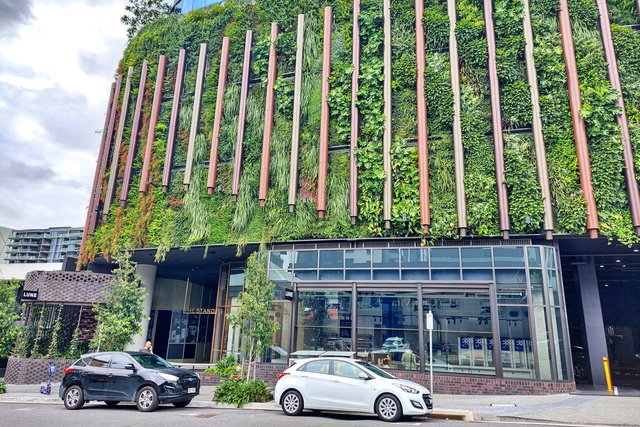
Located in the heart of Fish Lane arts precinct, this development by Aria is home to Australia’s largest fire compliant green wall at 410m2 and is the largest green wall in Queensland. Designed by Woods Bagot in collaboration with Fytogreen, the green wall showcases 68 different plant species and over 9,300 plants and won a 2024 World Green Infrastructure Award.
Nature-based solutions: Performance design & monitoring
Nature-based solutions refer to actions that protect, sustainably manage, and restore natural or modified ecosystems to address societal challenges, such as climate change, water security, food security, disaster risk reduction, and human health.
Optimising outcomes of greening efforts
Dr. Margaret Stanley, a professor at the University of Auckland in her session on ‘Connecting People with Place-Specific Nature in Cities Prevents Perverse Outcomes’ shared the importance of designing urban environments that reflect the unique natural characteristics and ecosystems of their specific locations. She discussed ways to mitigate the unintended negative consequence — referred to as “perverse outcomes” — that can arise when urban planning and greening efforts are not aligned with the local environment.
Key messages for moving beyond ‘more nature’:
- Preferentially plant indigenous species and support native birds and bees
- Prohibit planting of invasive species
- Promote less manicured green spaces (complex structures = more biodiversity)
- Support local wildlife by not applying unsuitable overseas wildlife gardening practices
- Consider local conditions and co-design with indigenous people when urban greening
Dr Stanley emphasised the need to incorporate native species and habitat types that are naturally suited to the local area when greening cities. By doing so, it ensures that urban greening efforts contribute positively to local biodiversity, ecological health, and community well-being. She underscored that using exotics unless they were invasive was a low bar which resulted in poor ecosystem functionality, and mismatches between plants and local conditions.
Through research, community engagement, and collaboration there is an opportunity to promote nature-based solutions that are context-specific and ecologically appropriate. This approach helps prevent negative impacts, such as the spread of invasive species, ecological degradation, or the failure of urban greening projects, ultimately fostering healthier, more resilient urban ecosystems and stronger connections between people and their local natural environments.
Vertical gardens
The i-Canopy project, led by Anouk De Brock, a PhD candidate at the University of Antwerp in Belgium, focuses on the dedicated monitoring of canopy systems for vertical greening. This project acknowledges that dedicated monitoring of vertical greening is missing and that monitoring matters as it can inform (timely) maintenance. The project aims to develop and implement advanced monitoring techniques such as the Leaf Area Index specifically designed for vertical green walls and vertical gardens. The leaf index describes the density of the plant layer covering the wall surface and affects the reduction of the external surface temperature and heat flux reduction.
The i-Canopy project explores the use of sensors and possibly AI technology to continuously monitor and evaluate the performance of plant canopies on vertical surfaces. This includes assessing factors like air quality improvement, temperature regulation, and biodiversity enhancement provided by these green infrastructures. By establishing a more comprehensive monitoring framework that can be deployed at scale. This will optimize the maintenance of vertical greening systems and ultimately contribute to more sustainable and resilient urban environments.
Urban trees
The Detecting Urban Tree Species in TLS LiDAR 3D Point Clouds Using AI Technologies project, led by Professor Piotr Wężyk from the University of Agriculture in Krakow, Poland, focuses on the use of advanced AI technologies to identify tree species in urban environments using LiDAR data including Terrestrial (using tripods or vehicles) and Airborne Laser Scanning (drones).
This pilot project was done with only five European tree species however scaling the method to more tree species is feasible. The project leverages LiDAR, a technology that uses laser pulses to create highly accurate 3D representations of objects and landscapes. In urban settings, LiDAR can capture detailed point clouds of trees, including their structure, size, and canopy shape. By applying AI algorithms to this 3D data, the project aims to automate the identification of different tree species based on their unique physical characteristics.
The goal is to provide scalable methods for monitoring urban tree populations. The project demonstrates the potential of combining AI with LiDAR technology with a range of machine learning methods tested and compared. Ultimately the XGBoost method where the tree structure is generated from a starting point delivers the best result over all others. Terrestrial laser scanning can significantly support tree species identification.
Capturing carbon benefits of hard landscaping
The Component-Level Embodied Carbon Database for Landscape Hard Works in Taiwan project, led by Yi-Jung Lin, an Assistant Professor at the Taiwan Green Roof & Green Wall Association, provides a detailed database of the embodied carbon associated with materials and components used in landscape construction projects, particularly in Taiwan.
This project focuses on quantifying the embodied carbon — the total greenhouse gas emissions generated during the production, transportation, and installation of materials — specifically for hardscaping such as paving, retaining walls, and other structural elements. By developing a component-level database including emissions from machinery, the project supports informed decisions that reduce the carbon footprint of projects. Through design choices informed by the database, a reduction of 60.27% was achieved in one project alone!
“That’s what we can do for the Earth Mother.’’ – Yi-Jung Lin
Ultimately, the project aims to contribute to Taiwan’s broader goals of reducing carbon emissions and enhancing environmental sustainability in urban and rural landscapes.
Nature-based solutions through partnerships
Wild West End
The Wild West End: The Transformative Potential of Partnerships project is a collaborative effort between public, private, and community stakeholders to enhance green infrastructure and biodiversity in city areas such as the West End of London.
Wild West End demonstrated the power of partnerships in transforming urban areas by bringing together various entities — such as local governments, businesses, environmental organizations, and community groups — to collaboratively plan, fund, and implement greening initiatives. These partnerships help create new green spaces, such as parks, green roofs, and street gardens, while also enhancing existing ones.
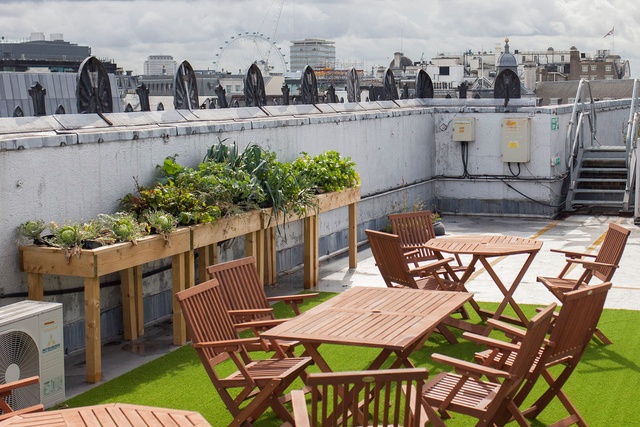
Laying the foundations for a greener Aotearoa
Applying these insights, New Zealand cities like Auckland, Wellington, Hamilton and Christchurch can transform into more inclusive urban environments and by integrating green infrastructure and nature-based solutions; our cities can enhance biodiversity, meaningfully reduce carbon emissions, and create healthier, more livable spaces for all residents.
Overall, by combining technology, community involvement, and ecological awareness cities in Aotearoa New Zealand have the opportunity to become global exemplars of sustainable urban living. This holistic approach will enable them to better withstand the impacts of climate change, enhance public health, and provide vibrant, thriving spaces for both current and future generations.
The 2024 World Green Infrastructure Congress (WGIC) was made possible through a collaboration between the World Green Infrastructure Network, Waipapa Taumata Rau University of Auckland Creative Arts and Industries (specifically the School of Architecture and Planning), and Design for Nature. WGIC2024 thanks all of its sponsors, visible here.
About the writer

Rebecca Mills is a strategist in delivering and measuring sustainability and climate impact. She is the founder and Managing Director of The Lever Room, New Zealand’s leading carbon measurement provider.
Mills has a Masters of Biosphere Science and impact measurement training from Saīd Business School.
She currently lives and works in Grey Lynn, Tāmaki Makaurau.

